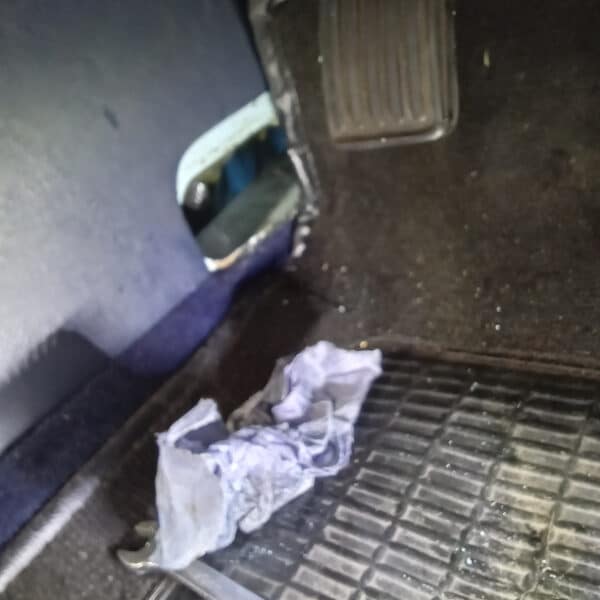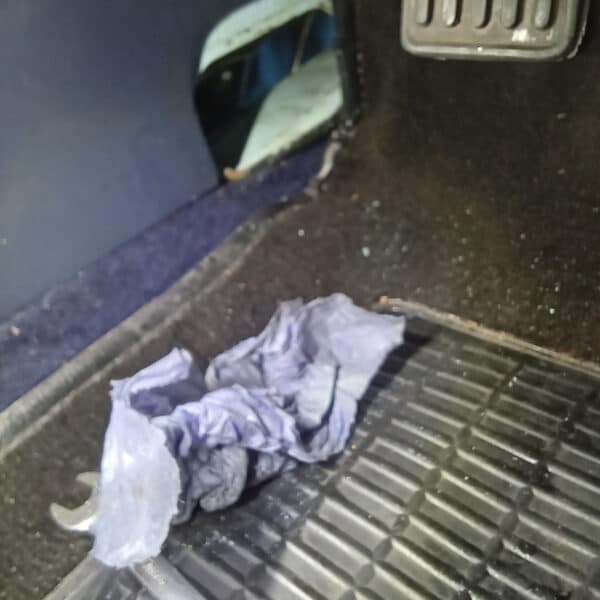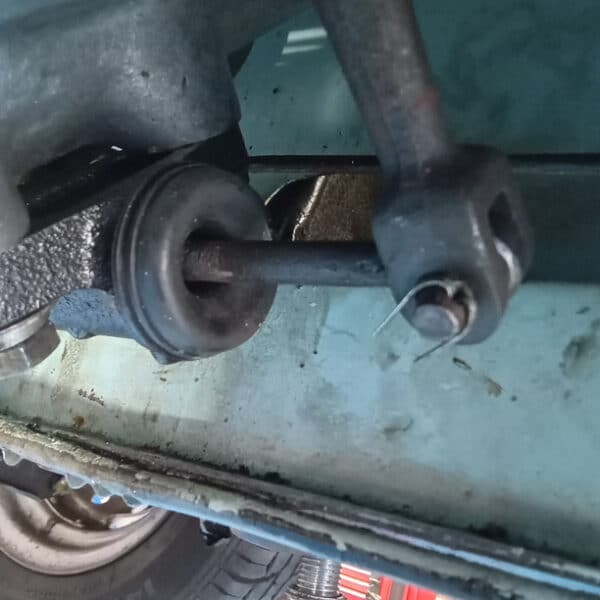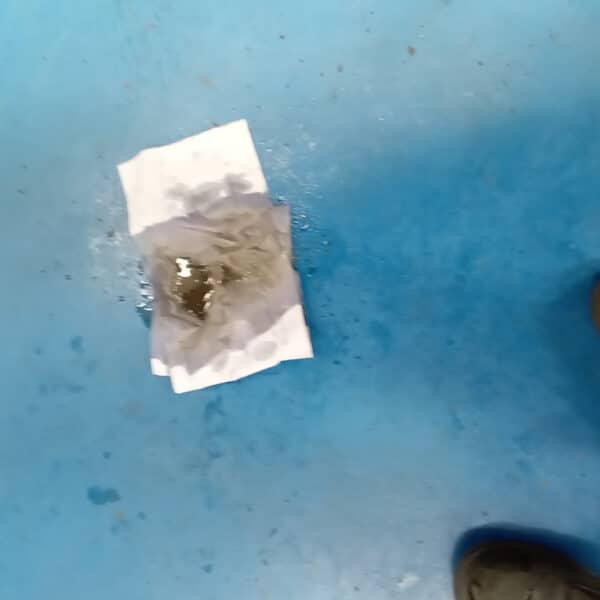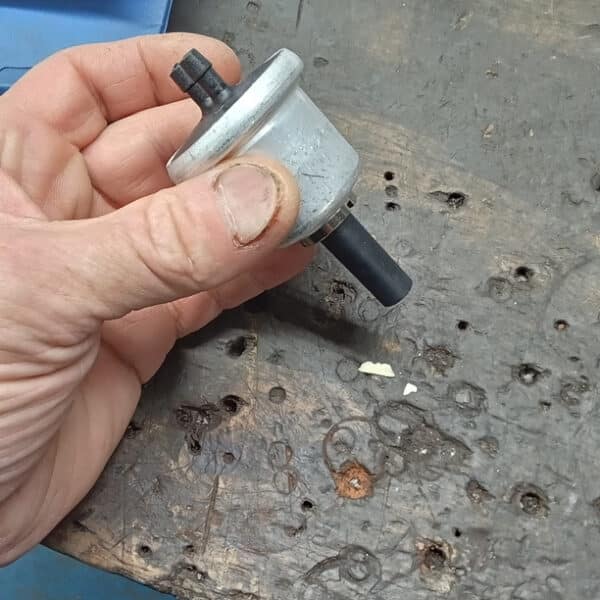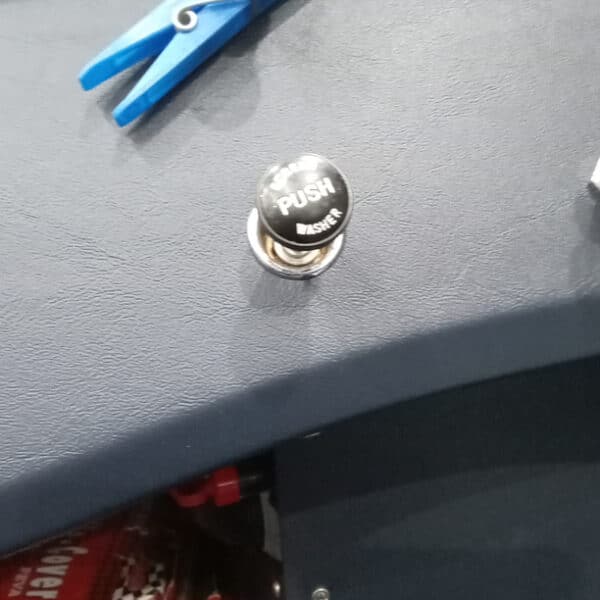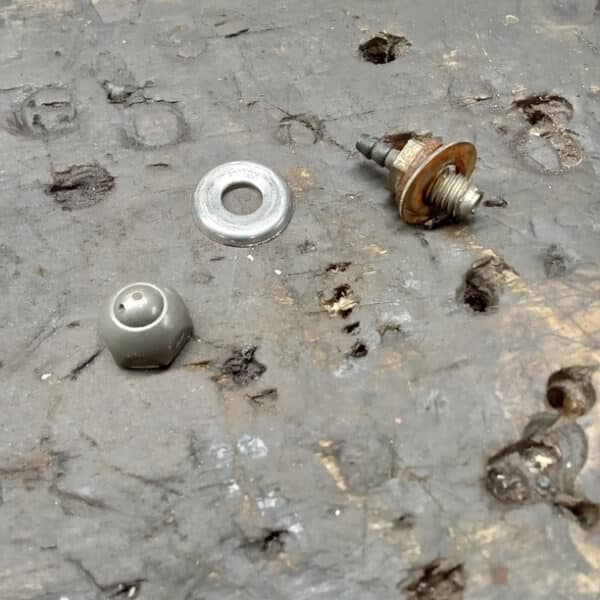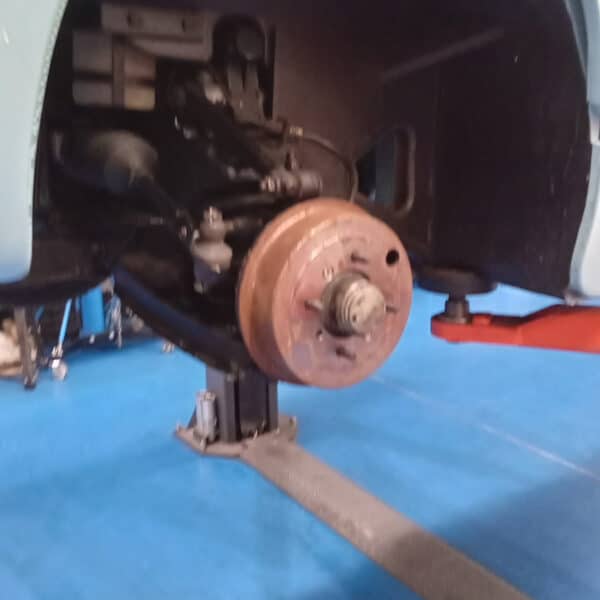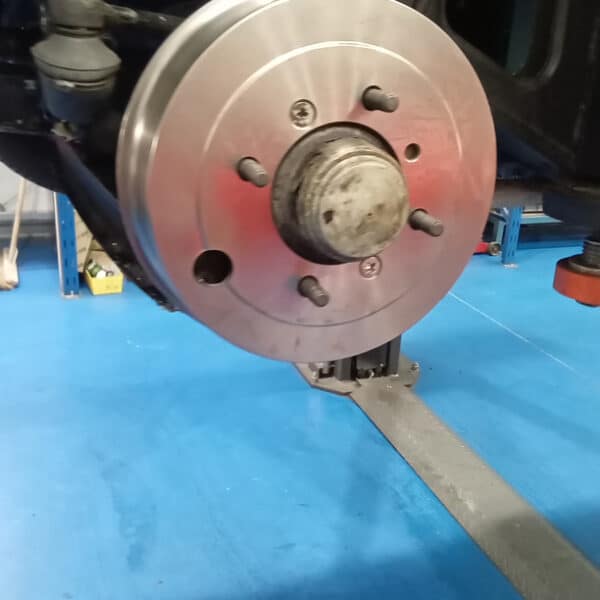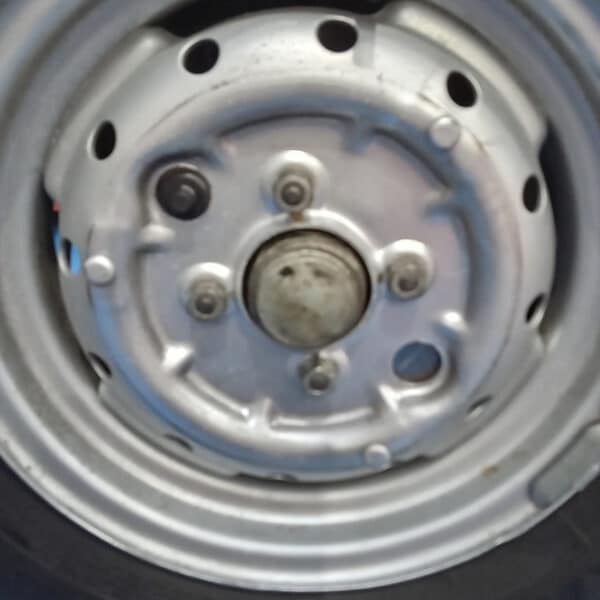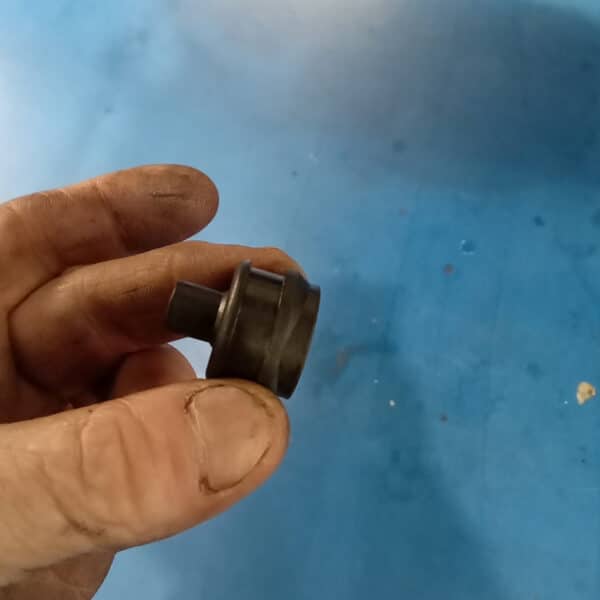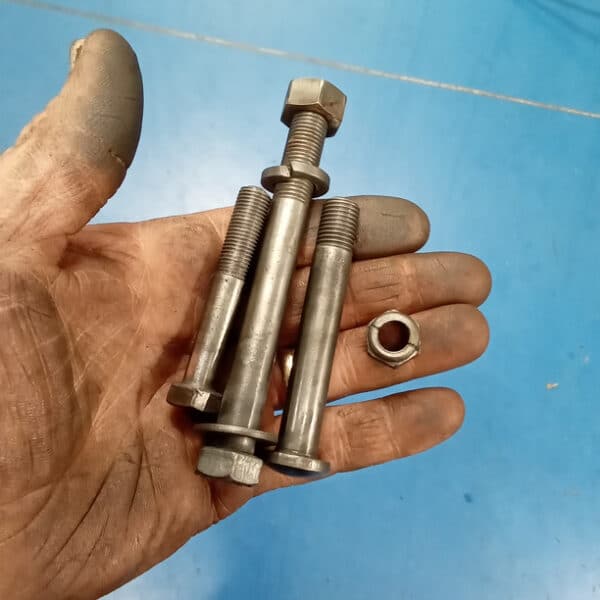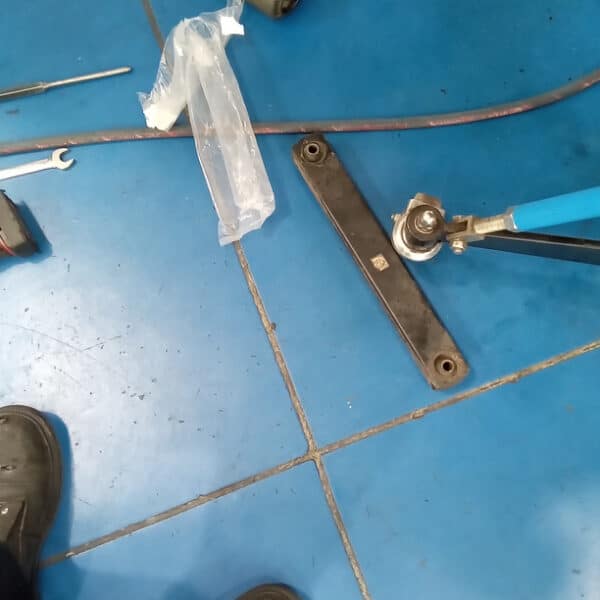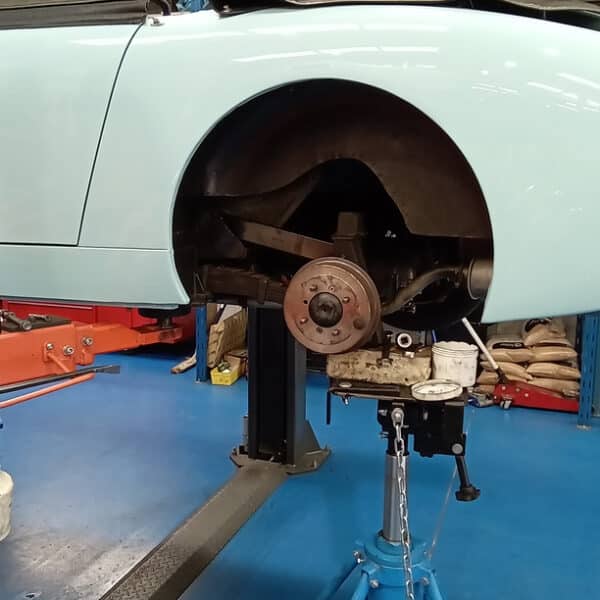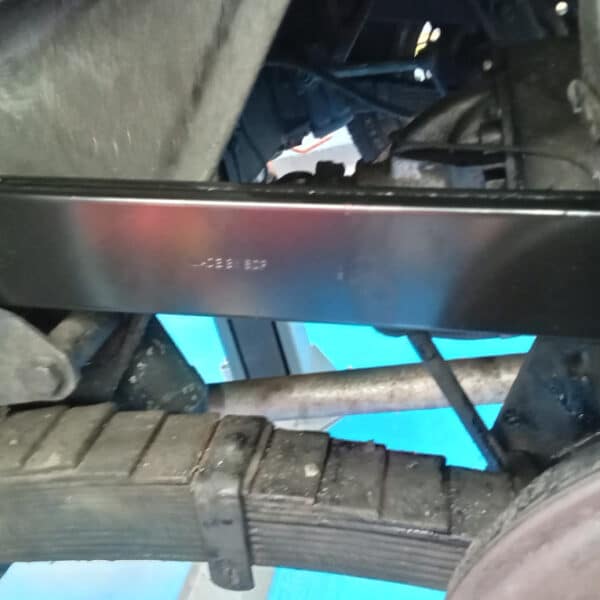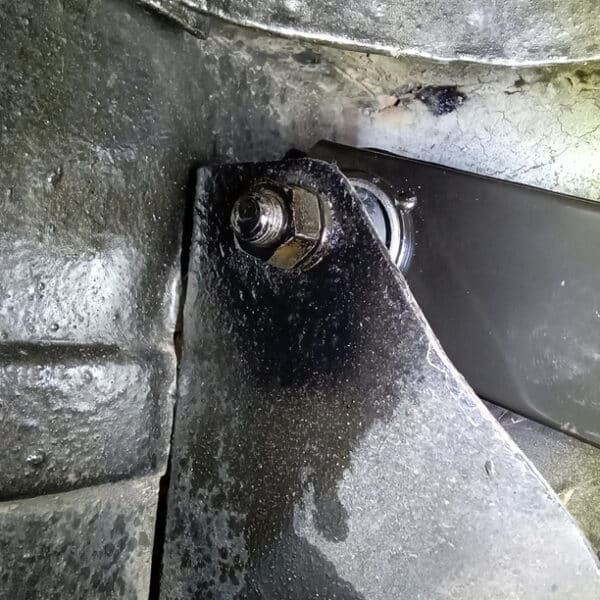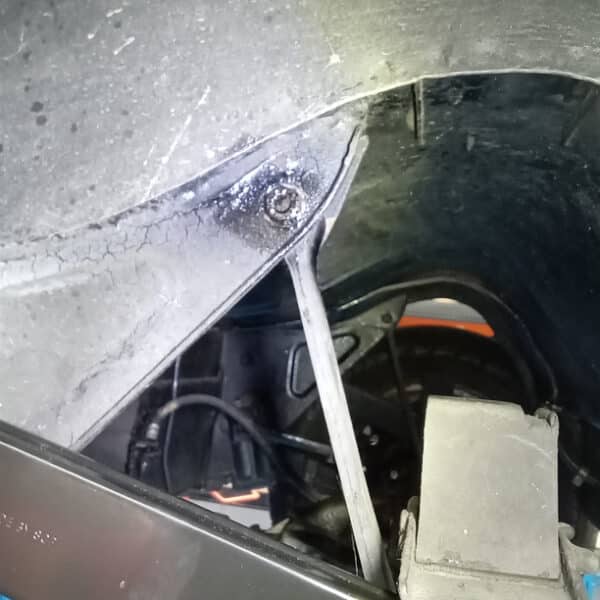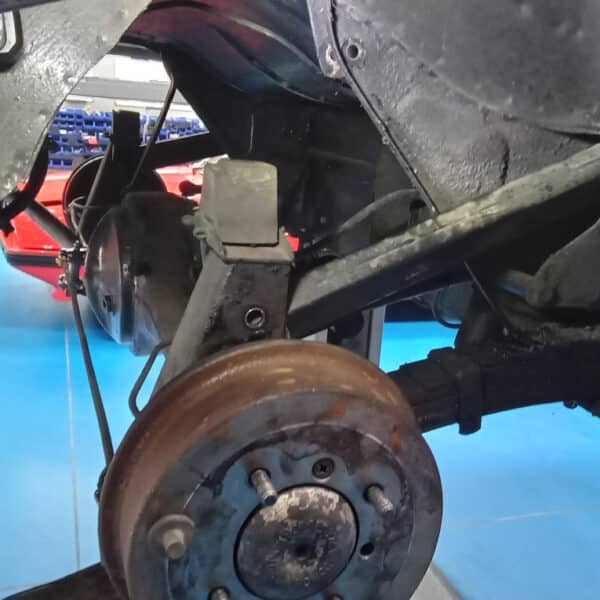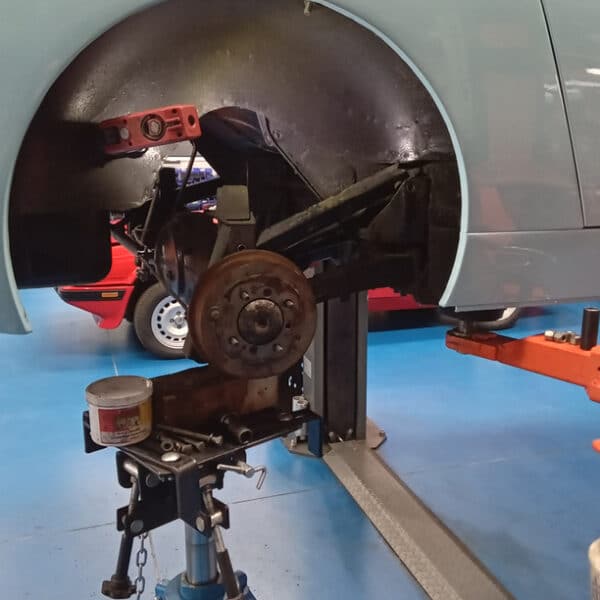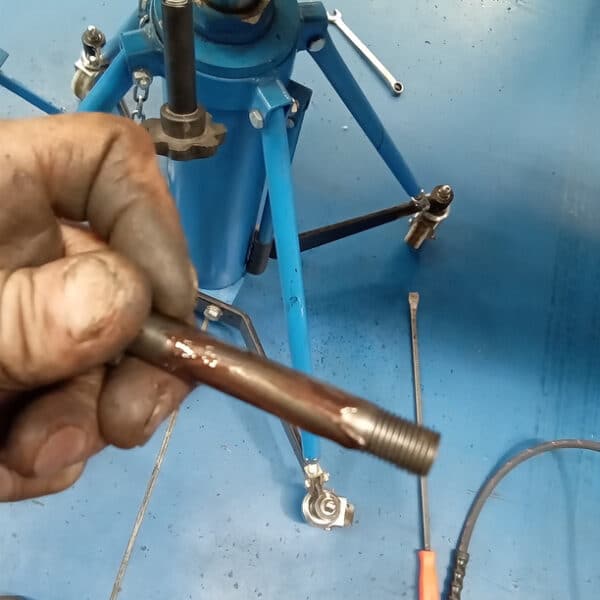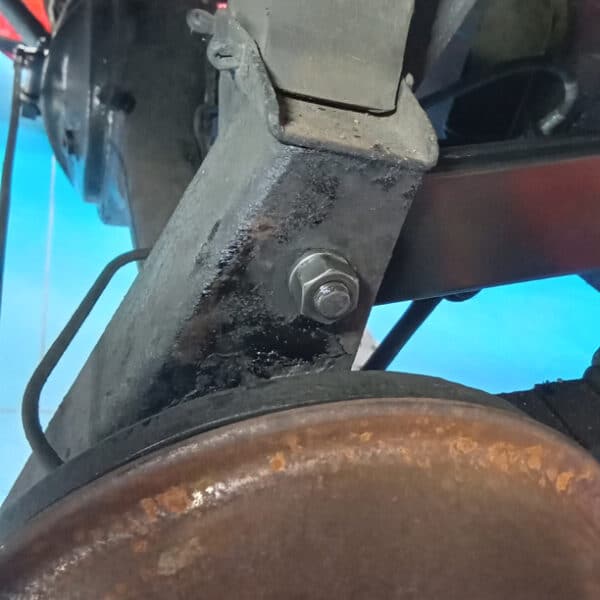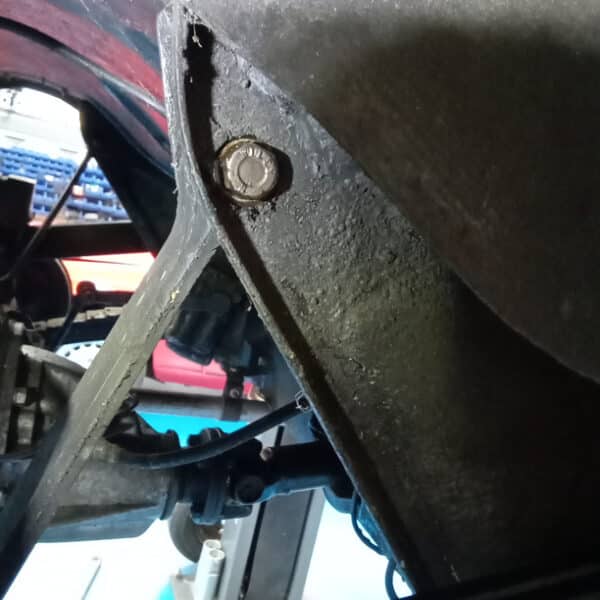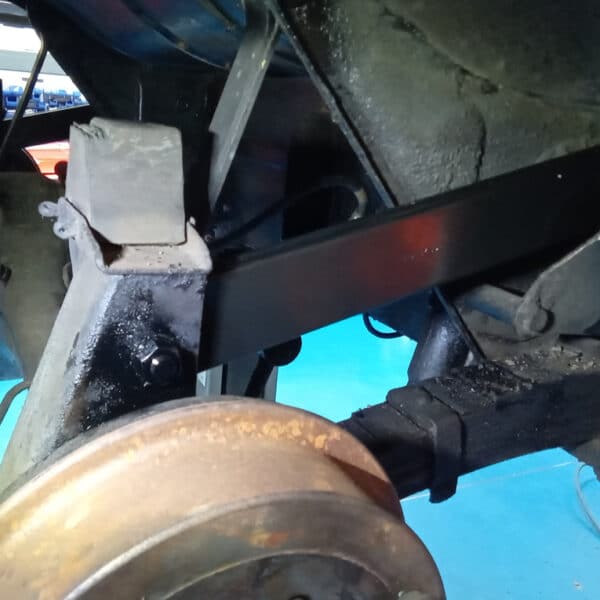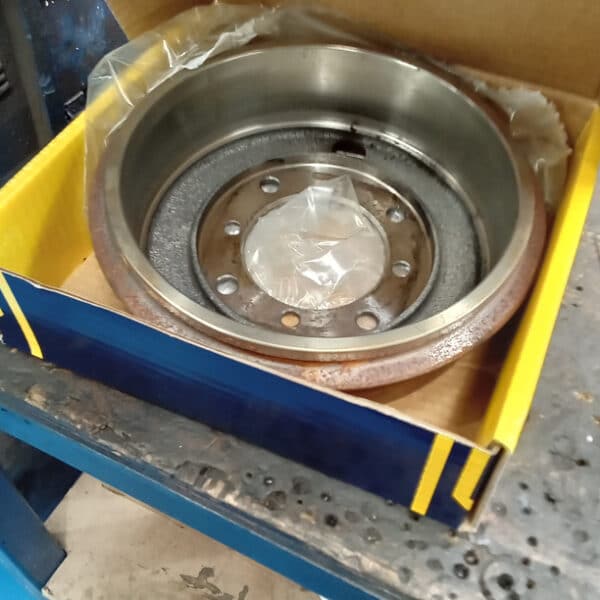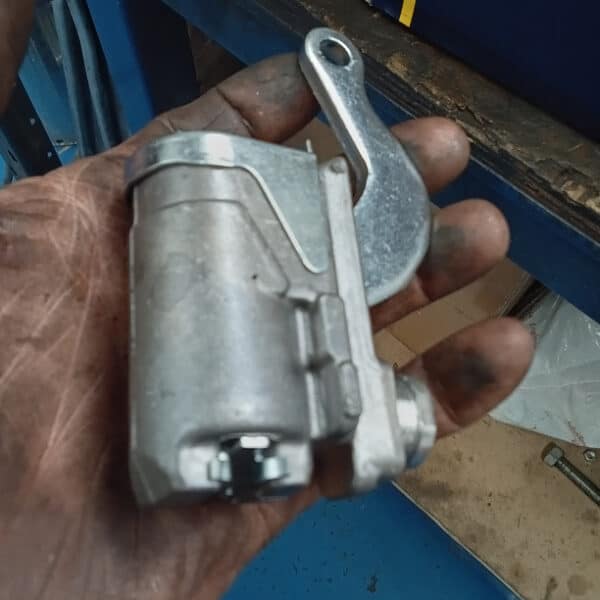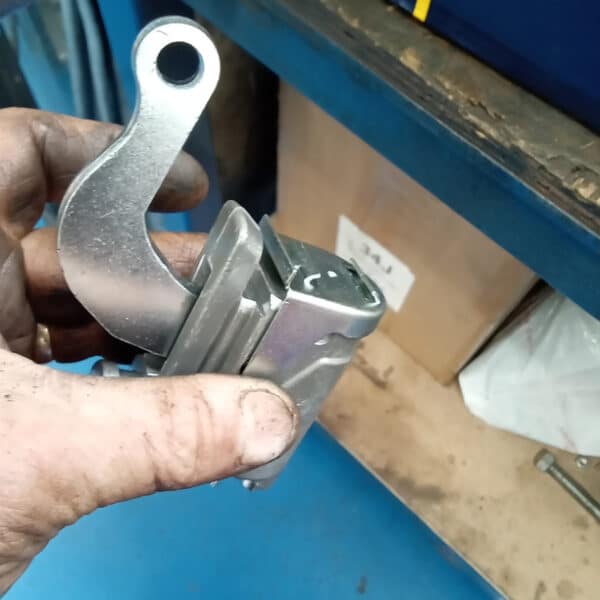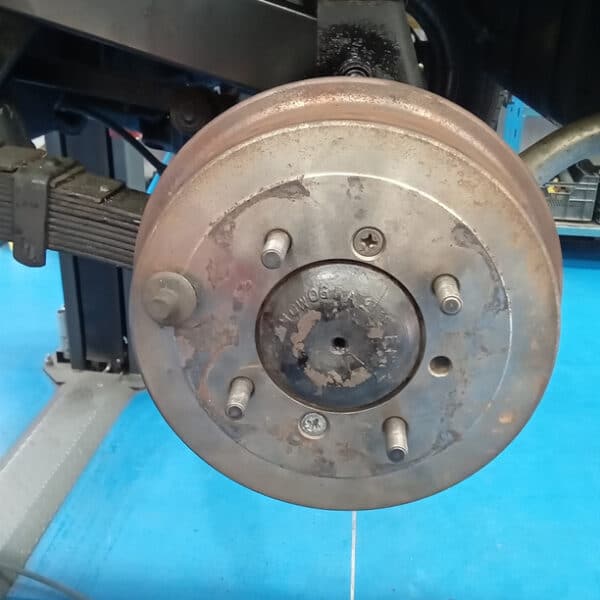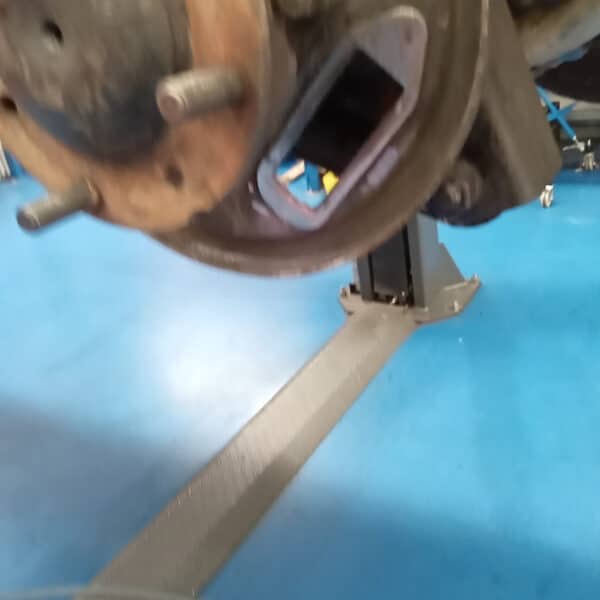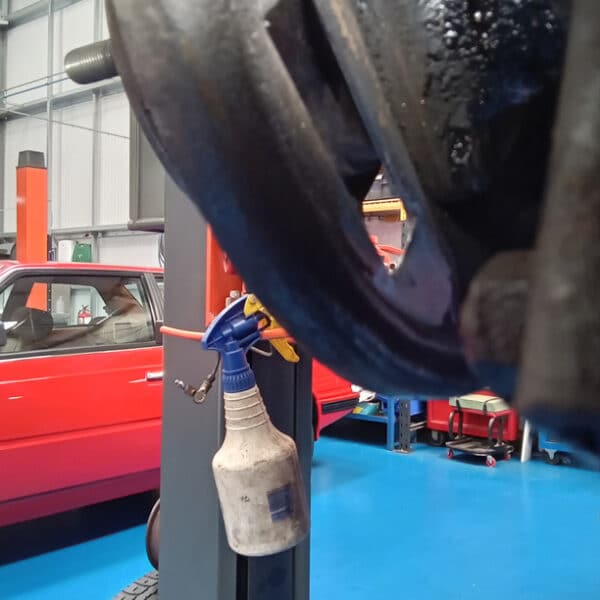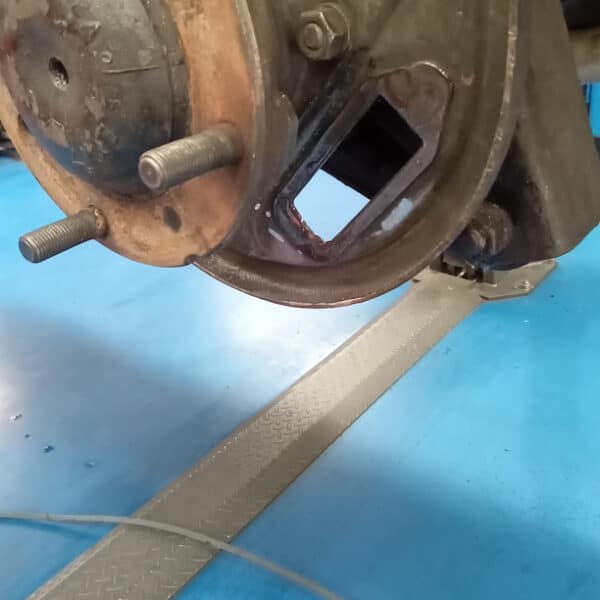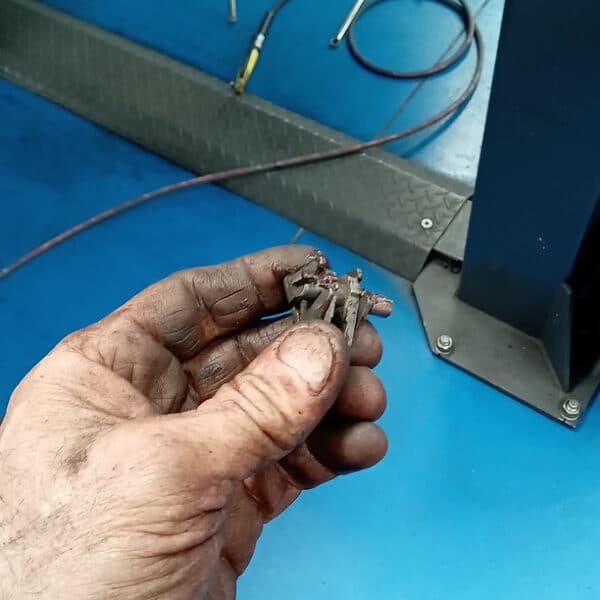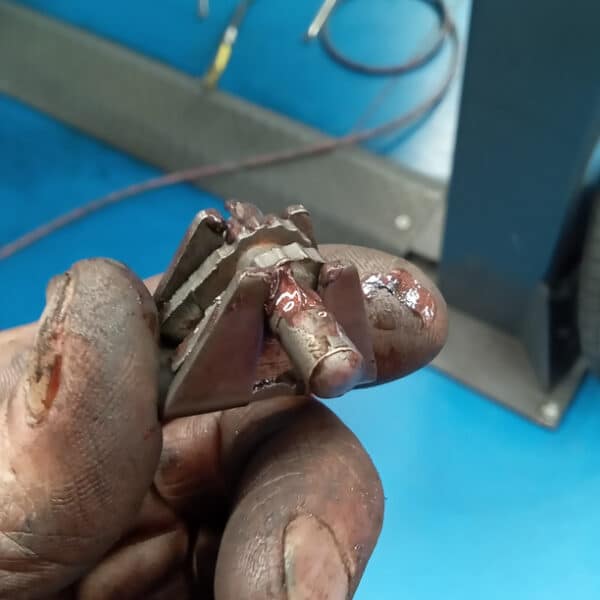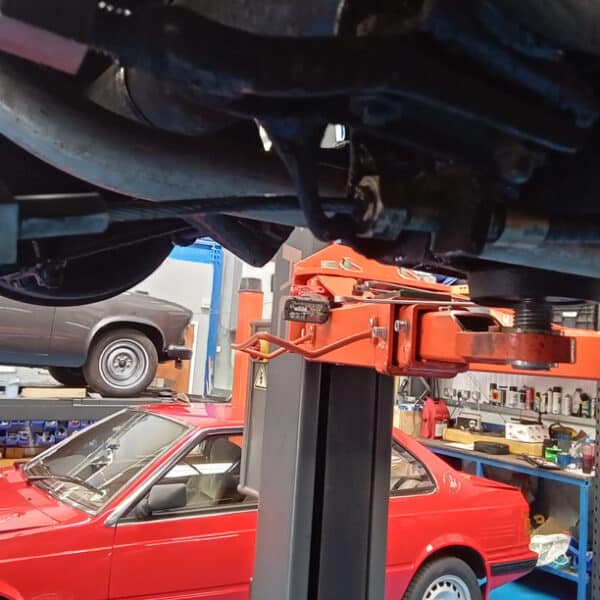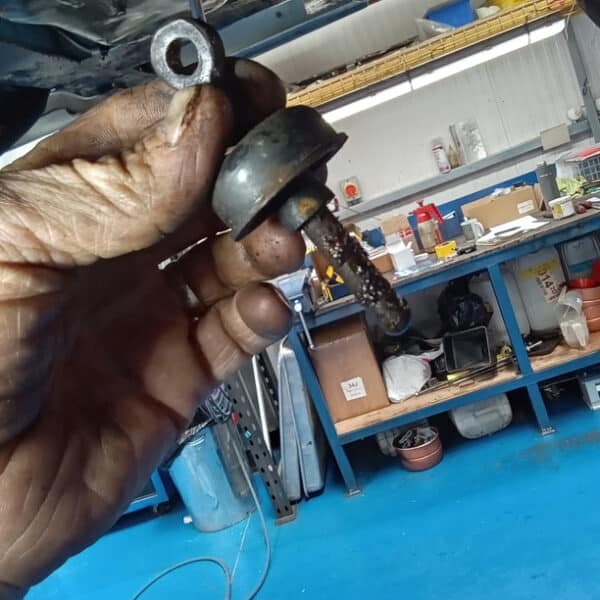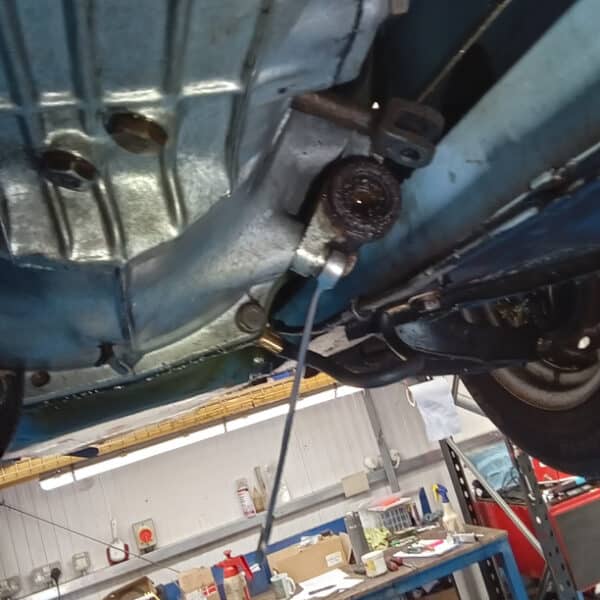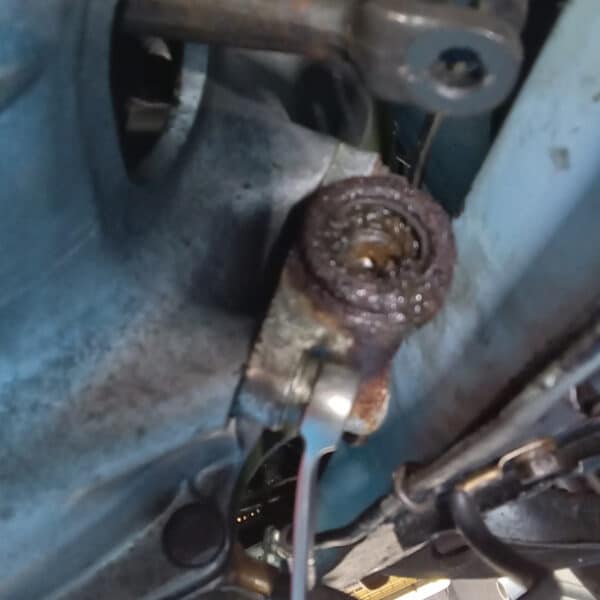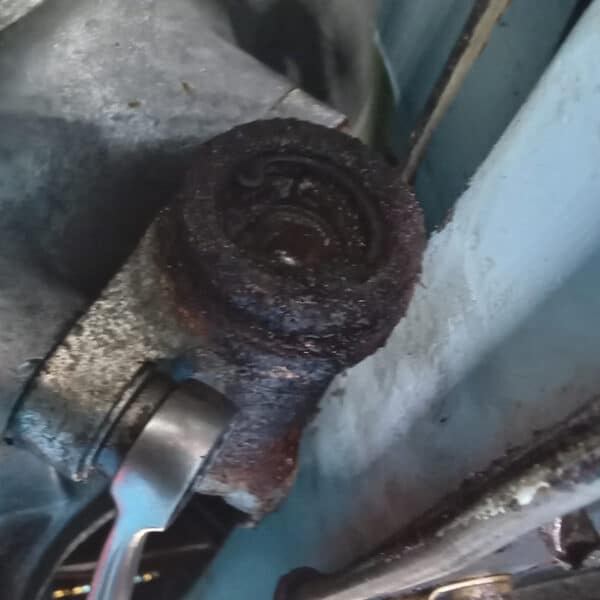Jonn investigated the washer system on our 1958 Austin Healey Frogeye Sprite, finding that the replacement pump differed from the original. He attempted to get the existing unit working again by priming the system using his syringe, though an internal pressure build-up indicated potential blockages. He then thoroughly cleaned the washer bottle, removed all associated pipes and jets, and blew them through to clear any obstructions. Once cleaned, he refitted the jets and piping, re-primed the system, and confirmed full functionality. The jets were then correctly aimed.
Attention then turned to the front brakes. Jonn removed the nearside front wheel and installed a new brake drum, adjusting the brake shoes and inserting a bung into the adjuster hole. The same bung was then fitted to the offside front drum.
At the rear, Jonn removed both wheels and replaced the trailing arms, ensuring they were securely fitted. He dismantled the nearside brake, removed the wheel cylinder, and cleaned the backplate where the cylinder slides. After a successful test fit, he lubricated and mounted the brake pipe to the cylinder before final installation. He then refitted the brake shoes and drum, followed by a shoe adjustment. During this process, he noted that the handbrake actuator rods had been welded and were too short, causing the brakes to remain engaged when connected, due to incorrect pivot positioning.
Jonn also replaced the clutch slave cylinder, bled it via the footwell bung hole, and cleaned the surrounding area. Despite this, clutch stiffness persisted, indicating an issue with the clutch itself.
With John’s assistance, the rear brakes were bled, and all shoes were adjusted. Jonn then fabricated a bracket for the heater fan switch, painting it black before tracing the relevant wiring and installing connectors. One wire required extending, which he achieved by soldering in a tension piece. The switch was mounted to the lower dashboard using the original fixing holes, connected, and tested successfully. He then taped and secured the wiring.
Finally, all wheels were torqued, wheel trims fitted, and tyres inflated to the correct pressures.
